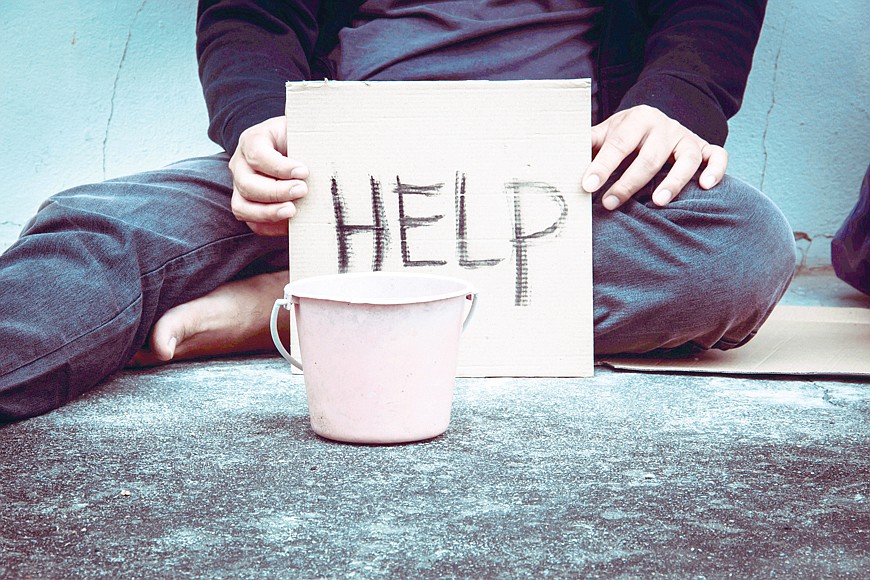- April 27, 2024
-
-
Loading

Loading

I don’t think a week passes without a local news story that touches on the homeless problem in Sarasota.
The latest data I could find was that in 2016 there were 971 homeless counted in one night in Sarasota.
Helping the homeless is a tough challenge for local governments. Trying to care for the homeless on the streets appears to be more costly than housing them.
For instance, a 2014 study by the Central Florida Commission on Homelessness found that “for long-term, chronically homeless individuals, including repeated incarcerations, emergency room use and inpatient hospitalizations,” Florida residents pay $31,065 per chronically homeless person every year, as opposed to paying only $10,051 per homeless person to provide permanent supportive housing and services such as job training and health care.
A study in North Carolina found that moving 85 homeless people into housing with services saved $1.8 million in health care costs, and they spent 84% fewer days in jail, with a 78% drop in arrests.
The key to successful homeless programs is combining government, nonprofit and philanthropic resources. A celebrated example is a public-private partnership in Pennsylvania’s Montgomery County called Your Way Home. It brings together county government, nonprofits and other philanthropic groups to work together in a unified, coordinated way to end homelessness in the county.
In 2017, YWH reported a 37% decrease in homelessness, a nearly 50% reduction in the number of homeless families and a nearly 40% decline in child homelessness since 2013. Prior to the launch of the public-private partnership in 2014, homelessness was increasing.
There are three major components of the YWH leadership system and partnership that make Montgomery County unique in its approach to ending homelessness.
First, there is a dedicated YWH Operations Team — housed within the county Department of Health and Human Services — responsible for system management and partnership backbone support.
Second, part of the collective impact model is the YWH Advisory Council, which comprises up to 25 public-private and nonprofit leaders appointed by the county commissioners. They provide guidance, feedback, support and resources for achieving the overall vision of ending homelessness.
The final piece of the YWH leadership system is philanthropic partnerships. These community groups focus on the YWH Initiative Fund, which is a private fund housed at the Montgomery County Foundation. YWH pools its grant funding, with funds managed by the Operations Team, guided by the Advisory Council, and ultimately deployed to core system service providers.
YMH says the key is its “housing first” approach that helps the homeless find housing and stay in stable conditions by connecting them to the community, health, human, and financial services to prevent future homelessness. Participants experiencing a housing crisis can call 211 (powered by United Way) and reach the Montgomery County Homeless Prevention Center. Depending on need, they could be referred to resources including Veterans Affairs, substance abuse and childcare programs.
Next, residents would be referred to Housing Resource Centers (operated by one of YWH’s community partners) for prevention, diversion and rapid rehousing (an approach that reduces the time individuals are homeless by removing as many barriers to entry as possible). Screening through the call center this way conserves resources and reduces costs.
Finally, individuals or families can go to conveniently located Housing Resource Centers where trained specialists offer homelessness prevention that involves coaching, fair housing counseling, landlord-tenant relations or temporary utility assistance. The resource center offers temporary financial assistance for moving, security deposits, or first and last month’s rent. It can rapidly rehouse individuals or families into permanent housing and provide temporary rental subsidies, housing stability services and access to mainstream resources.
The good news is Sarasota is starting to adopt a similar approach. The county approach explicitly recognizes that a community public-private partnership is the only thing that will work, with the county providing coordination and social services, and philanthropic, community and business groups providing the rest. The county has contracts with Suncoast Partnership to End Homelessness to quarterback the process of connecting the homeless with resources that will help them, and a contract with the Salvation Army for an emergency shelter.
Last year, meanwhile, the city of Sarasota used the Florida Housing Coalition’s Homeless Crisis Response System, which also combines emergency and permanent housing with social services. The city says homelessness has dropped 18% since it implemented the new system.
Both city and county have only taken the first steps. A fully developed and joint system like Your Way Home is still a ways down the road. Without crucial assistance from mature community and public-private partnerships, Sarasota will continue to struggle to confront homelessness. Let’s hope we keep moving in the right direction.
Adrian Moore is vice president, and Nicholas DeSimone is a policy analyst at the Reason Foundation. Moore lives in Sarasota.